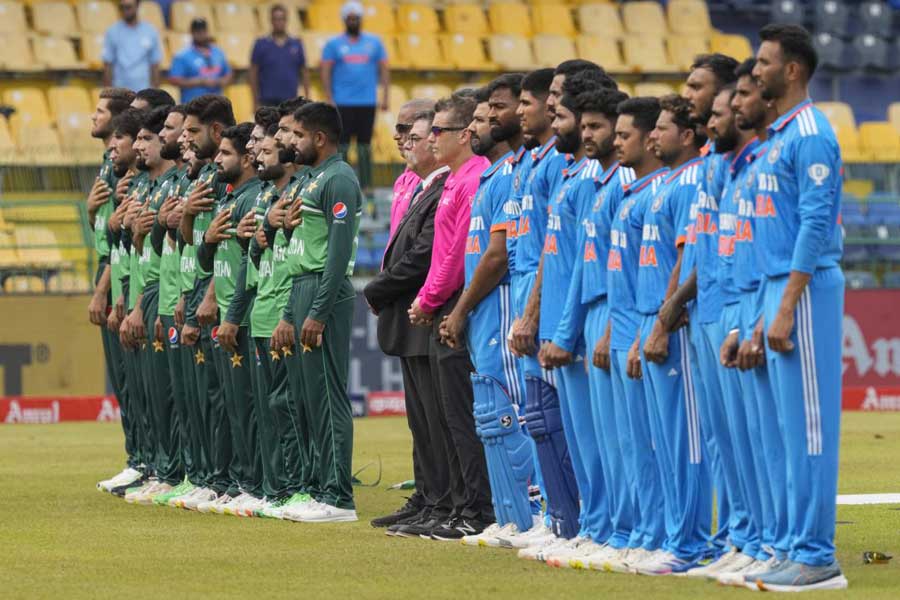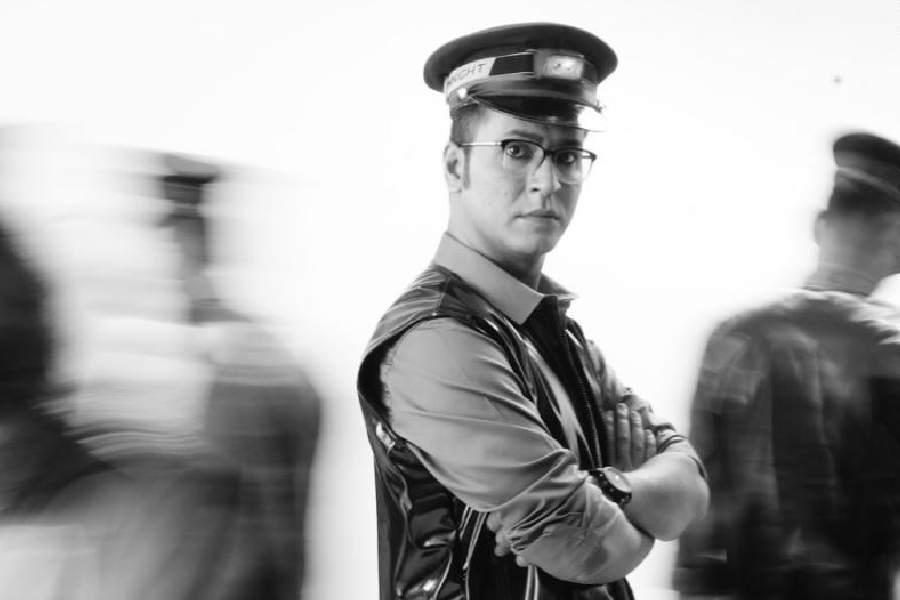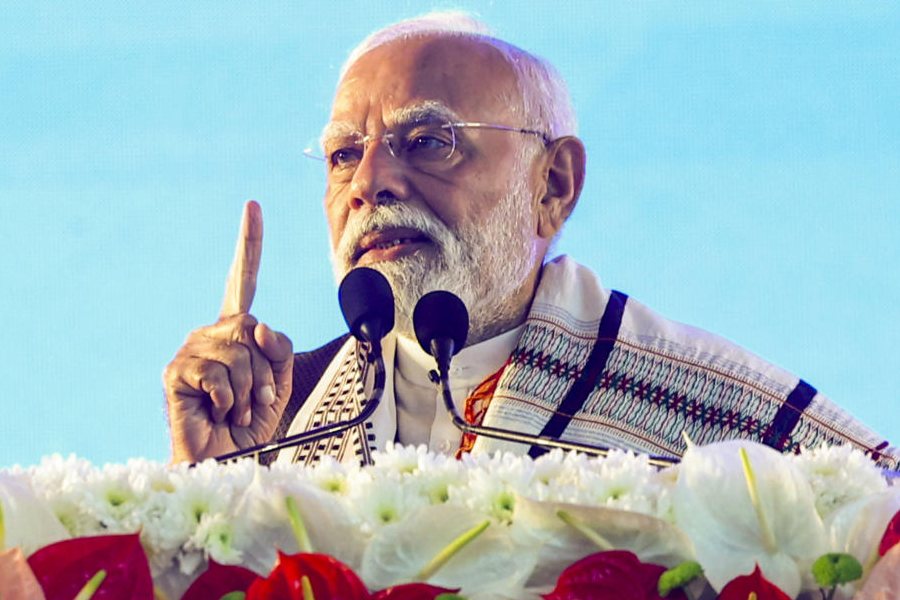 |
| HOT SEAT: Cricket Association of Bengal; Jagmohan Dalmiya (below) |
 |
Is a batsman, when he is in common phraseology ‘winded’, allowed any time to recover breath?” The question, if asked today, might inspire a roll of guffaw. But in November 1844, when a reader of the Bengal Quarterly Sporting Magazine posed this in a letter to the editor, it was a perfectly legitimate question. “No rule for it. It must depend on the umpire calling play,” the editor replied in all seriousness.
To be sure, cricket has since evolved and its rules have undergone a sea change. Yet, the interest in the game ? amply demonstrated by the question asked more than one-and-a-half centuries ago ? remains undiminished in Bengal. If anything, it has grown. If Dadabhai Naoroji and Surendranath Banerjea turned up along with the Prince of Wales to watch an international match between the home-grown Presidency Club and an Australian team at the Eden Gardens in 1885, thousands throng the same venue today whenever India plays a rival.
Even in the early decades of the 20th century, the maharajas of Cooch Behar, Natore and Mymensingh helped develop the game in colonial, undivided Bengal. It’s a legacy bequeathed to the Cricket Association of Bengal (CAB), now tasked with development of what’s unquestionably the country’s most popular game. And the CAB ? one of the oldest state cricket associations in the country born in 1928, the same year the Board of Control for Cricket in India (BCCI) was founded ? is not just steeped in history, but rich in resources as well.
According to the CAB’s annual report of 2005-2006, the association has more than Rs 10.35 crore in fixed deposits and development funds and another Rs 84 lakh in current accounts in different banks. The amounts in deposit may not be staggering but are good enough to earn the CAB a handsome Rs 78 lakh in interest annually. But then, compared to some other states associations, the CAB does not have club facilities such as a swimming pool, bars, restaurants or rooms for guests, which help the Maharashtra and other state cricket associations generate additional revenue.
Needless to say, the post of the CAB president, who presides over one of the country’s oldest and richest cricket bodies, is a high-profile position worth fighting for. So, not unnaturally, stakes are high for Jagmohan Dalmiya, the incumbent president facing one of the biggest battles of his life to dislodge him from his perch. After all, his position at the helm of the CAB gave him, in the first place, a toehold in the country’s cricket administration in early 1990s, an opportunity he successfully used to make it to the top of the BCCI and later to the International Cricket Council (ICC).
In fact, unknown to many, the CAB constitution was amended a few years ago to remove restrictions on a maximum four-year term for the president like other office bearers to allow Dalmiya to remain the CAB head when he was the BCCI or the ICC president. “This was necessary,” a CAB insider says. “You may be the BCCI president or even the ICC president. But you won’t wield much clout in the country’s cricket administration unless you head a state association.”
Who knows it better than Dalmiya! And for the first time in nearly two decades that Dalmiya has been in control of the CAB, directly or indirectly, the former BCCI president, being strafed by the Sharad Pawar-led BCCI on a number of charges including misappropriation of funds, faces a challenge to his throne on his home turf. To make things complicated for him, the challenger, Calcutta police commissioner Prasun Mukherjee, enjoys the backing of Bengal chief minister Buddhadeb Bhattacharjee, who has publicly called for Dalmiya’s ouster.
The question being asked ? and answered ? is what Dalmiya’s CAB has done for cricket in Bengal. “Apart from politicking, the present regime has done precious little for either the association or for cricket,” says former cricketer Gopal Bose, a fierce critic of Dalmiya and his style of functioning.
For one thing, Bose says, the Eden Gardens have been turned into “a torture chamber” where seats have been “increased mindlessly without bothering about the comfort of the spectators.” For another, he says few cricketers have found themselves on the committee of the cricket body. “It’s a caucus that runs the CAB. Leave alone the cricketers, even members have no say in its affairs whatsoever,” Bose says.
The problem, clearly, lies in the CAB’s constitution, which gives voting rights to only 121 affiliated members, 94 of them clubs, most of whom are known to be backers of Dalmiya. Some 40,000 individual members have no voting rights. “The Constitution should have been amended by now to ensure the CAB has the right mix of cricketers and administrators like several other state associations. But nothing has been done here for obvious reasons,” says Sambaran Banerjee, former Ranji player from Bengal.
The Dalmiya camp quashes the charges. Goutam Dasgupta, a member of the CAB’s board of trustees and a Dalmiya confidant, moans that a concerted attempt is being made to “remove” the CAB president “in an unfair way” after “all his contributions” to Indian cricket. He produces a computer printout to demonstrate what Dalmiya’s board has done where internationals are concerned.
If Eden Gardens hosted 18 Test matches in 45 years since 1933, 16 Test matches have been held under the present dispensation that “has been in power” in the last 28 years, the printout reads. Between 1987 and 2005, Eden Gardens had hosted 18 one-day international and nine Test matches, including the 1987 World Cup final. Dasgupta also reels off a number of coaching camps and tournaments the CAB has organised over the years to train and nurture talent. The CAB, he says, was the first to install floodlights in the country in the Eden Gardens in 1993.
Not everyone agrees with the CAB’s achievements, though. “The CAB has been one of the most static state associations over the last two decades or so. It has been too complacent to do anything worthwhile for cricket,” says a former Test player, now engaged in coaching.
Whatever the case, Dalmiya is unlikely to throw in the towel easily. He has in the past valiantly fought the likes of former Union ministers K.P. Singh Deo and Madhav Rao Scindia. “He can only go down fighting,” an aide ventures.
In any case, where would Dalmiya be today if it weren’t for the CAB?











